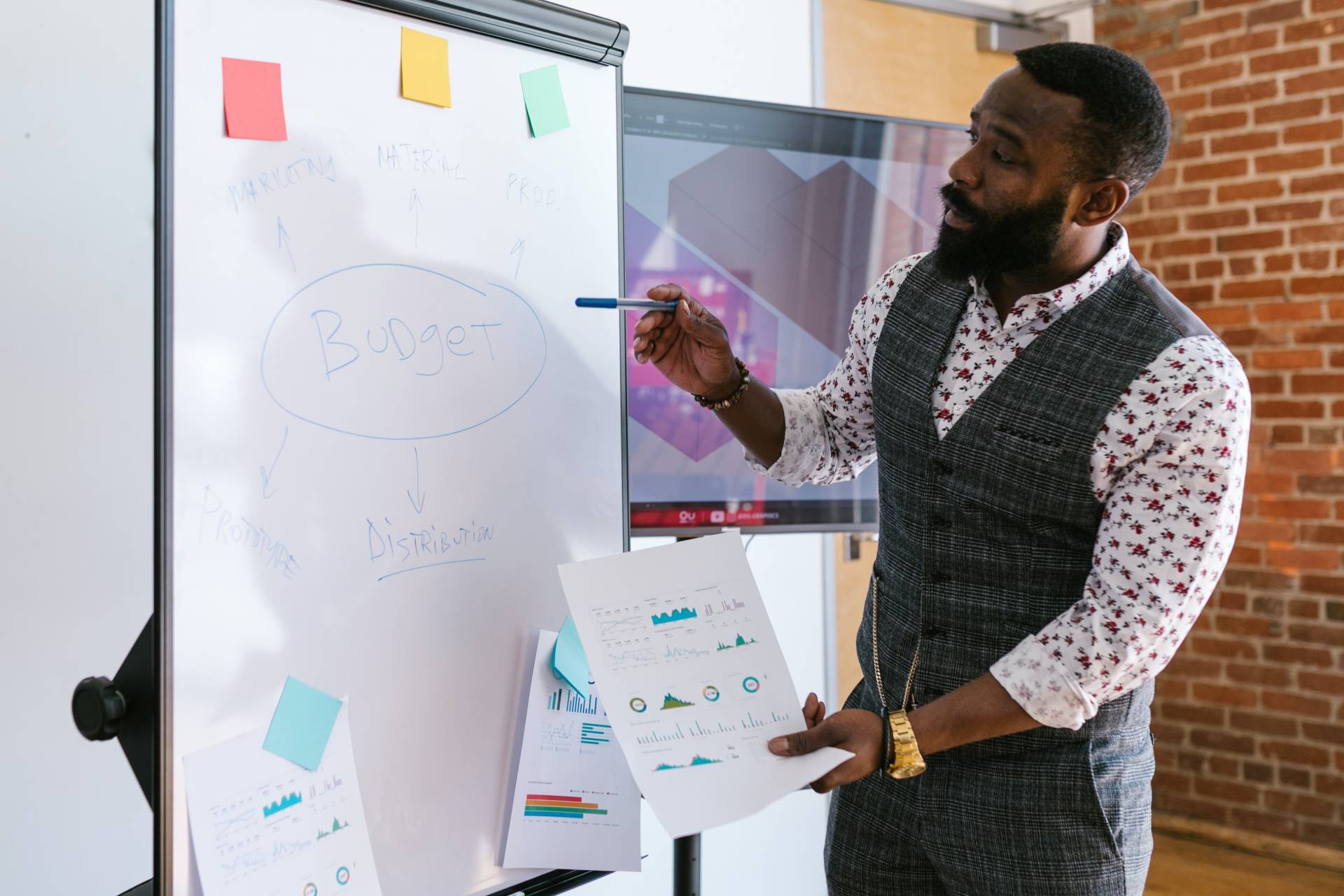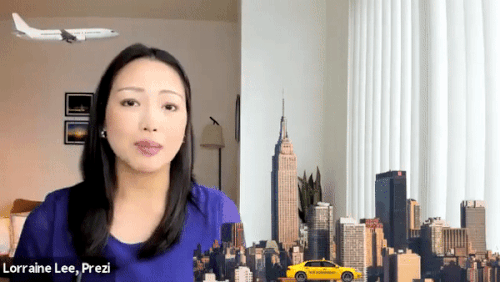

To create a strong presentation, it’s essential to first consider the elements that make a story come to life. When the story elements are not present, it can be challenging to stay focused. For example, picture this: It’s 4:00 p.m. in the afternoon, and you’re about to join another Zoom call. When the host lets you in, they immediately begin screen sharing, and you already feel yourself starting to lose focus.
In the virtual era, attendees can become very easily distracted and fatigued from looking at a screen all day. According to Global Newswire, 49% reported a high degree of exhaustion due to numerous daily video calls. As a result, we are constantly fighting to keep our audience’s attention, whether in a keynote or a team meeting.
There’s a solution to ensure truly dynamic and strong presentations. Let’s move into how you can upgrade your meetings, presentations, and video calls even further with these three storytelling elements, which I like to remember as “CAR”:
- Creativity
- Authenticity
- Relevance
Creativity
When you first think about building out your presentation, it can feel like an overwhelming feat. Of course, you want your presentation to be designed well to keep your attendees captivated. However, you don’t need to have a design team or even be a professional graphic designer to be creative. What’s more impactful to audience interaction and attentiveness is your delivery.
An example of this is Skill Scout Films CEO Elena Valentine. During her keynote at a marketing summit, she started off her presentation with a slam poem. She used this to illustrate her journey into public speaking, conveying her presentation delivery style.
Authenticity
This ties directly into being an authentic presenter. When you share stories of your own personal experience, you are showing your audience that you have trust in them. In addition, it makes both the presenter and attendees feel more connected.
Vanessa Van Edwards, bestselling author and keynote speaker shares a childhood picture to kick off her TED Talk about body language. By poking fun at herself, her attendees were immediately hooked into what she was saying.
Relevancy
By weaving a story into your entire presentation, you can constantly reference it throughout the presentation. In addition, an overarching theme makes it easier for your audience to follow along and stay tuned into your story.

One of my favorite stories that truly encompasses all of “CAR” is from my manager Lorraine, who talks about her journey into public speaking.
She talks about how she was a ball of nerves at even the thought of public speaking. But, after she continued to sign up for speaking gigs, she now has regular speaking engagements and has been named a top virtual keynote speaker.
In her story, she incorporates these three elements:
- Creativity: She uses simple cut-out graphics and GIFs to allow us to follow along with her as she prepares to go to the Empire State Building for an on-camera interview.
- Authenticity: She is also vulnerable with the audience by sharing a personal story.
- Relevance: Lastly, she incorporates relevance because, at one point or another, most people have felt a level of uncertainty and nervousness before public speaking. Lorraine also shares how to be more confident and competent on video by sharing how far she has come on her public speaking journey.
When we meet virtually, our attendees are limited to only seeing the upper half of our bodies. And if you screen share, they only see you in a tiny box. By incorporating these three elements into our meetings and presentations, we can build connections with our attendees and keep them captivated the entire time.
Beyond the Keynote
Video conference fatigue has descended upon the workforce due to the shift to remote and hybrid work. We have seen that meeting over video is not quite the same as meeting face to face. We have to work harder to understand nonverbal communication from other attendees. When you are in meetings, attendees will often have their mics turned off, which can make it feel like you’re talking to yourself. Having to stare at yourself on camera can also be very draining and cause you to focus more on yourself than your audience.
Storytelling
Needless to say, it’s crucial to overcome video conference fatigue by making your meetings more interactive and engaging by–you guessed it– weaving a story into them.
Shivani Berry, CEO & founder of women’s leadership program Ascend, shared a LinkedIn post recently outlining how to get your team to support and get invested in your ideas, which can also be applied for job interviews and your career.
She recommends using stories to get people to trust your ideas and what you are talking about through the AIM framework.
- Audience – You want to understand what your audience cares about and what they want to know
- Intent – The way you structure your story, depending on your end goal.
- Message – What is the key point you are trying to get across?
If you wanted to implement this framework for a job interview, here’s how you could structure it: Your audience is likely made up of the interviewer and the team you are hoping to join.
Let’s say they want to know how you can be a strong asset to their company. Your intent as the candidate is to structure your answers around what you plan to bring to the company.
This is your chance to really sell your experiences. Lastly, the message you are sharing should answer this question, “How will my experiences/stories show that I will be a great addition to the company?”
Next time you create a presentation, prepping for an interview or a meeting, find a way to incorporate a story. This will guarantee that your attendees will stay tuned into your presentation.
Image Credit: RODNAE Productions; Pexels; Thank you!
Video Credit: Naba Ahmed; Prezi; Thank you!
Gif Credit: Lorraine Lee; Prezi; Thank you!










Naba Ahmed
Naba is a marketer and virtual speaker who is passionate about helping her audience find their authentic stories. She is a leader at the intersection of editorial and tech, combining her experience in journalism and marketing to create memorable content. As a Content Editor at Prezi and a former newsroom editor, she shares storytelling tips that can be used to deliver stronger presentations.